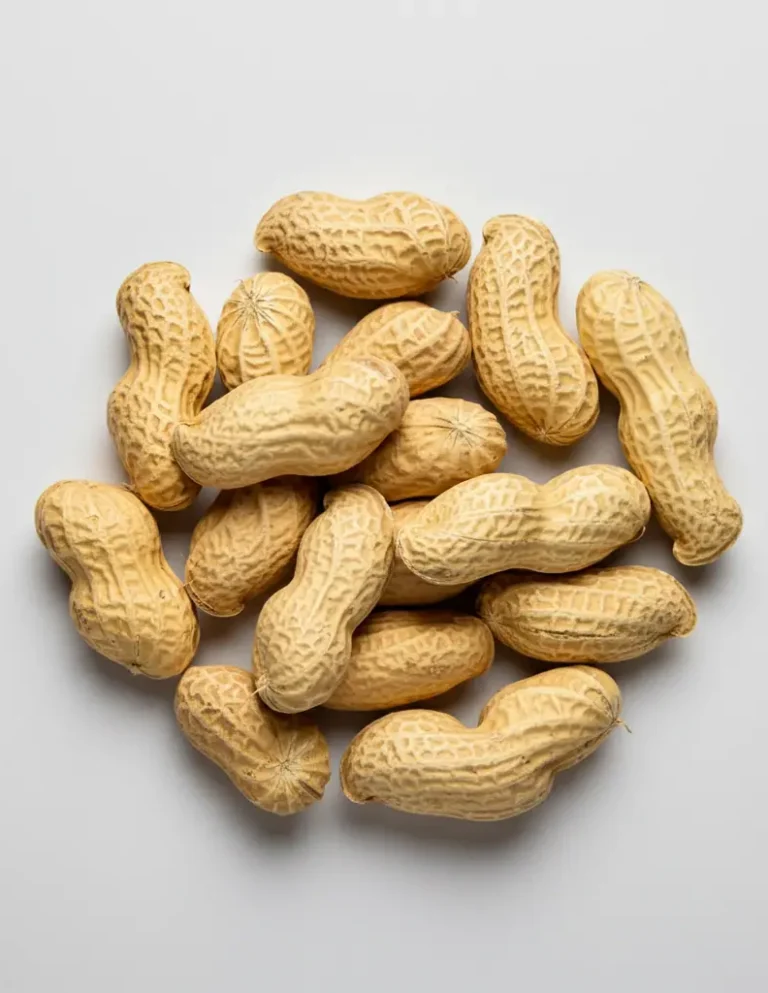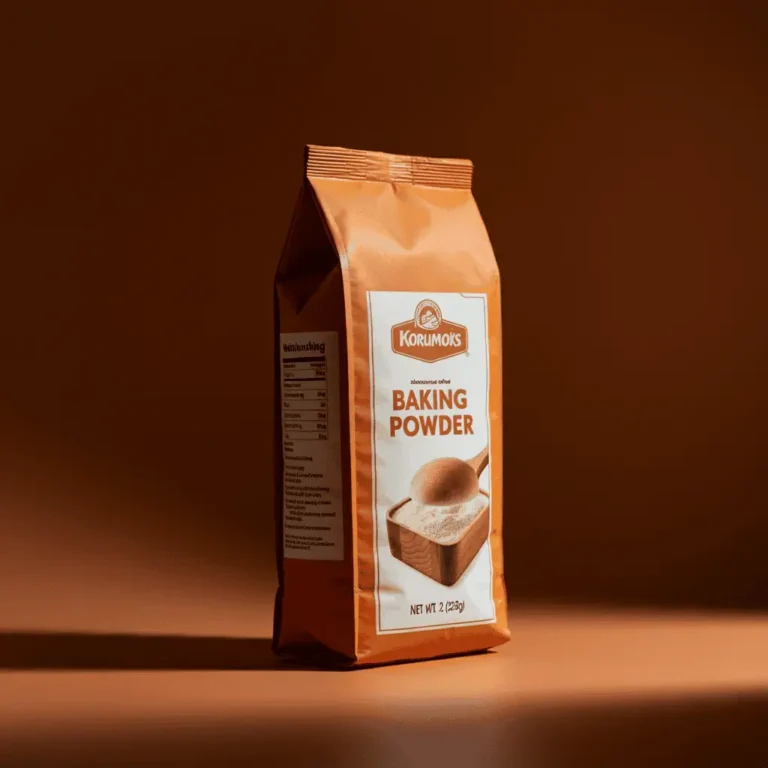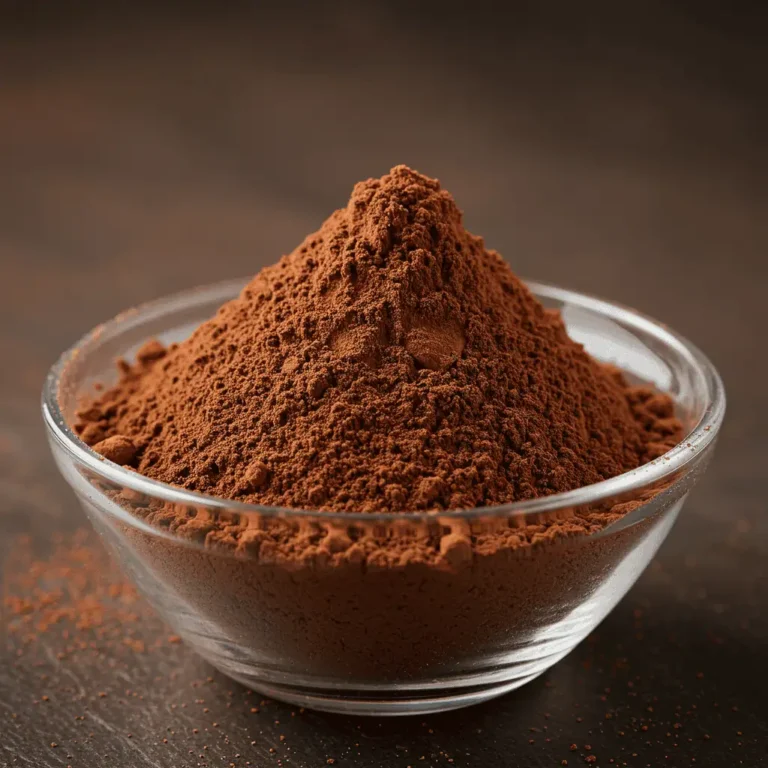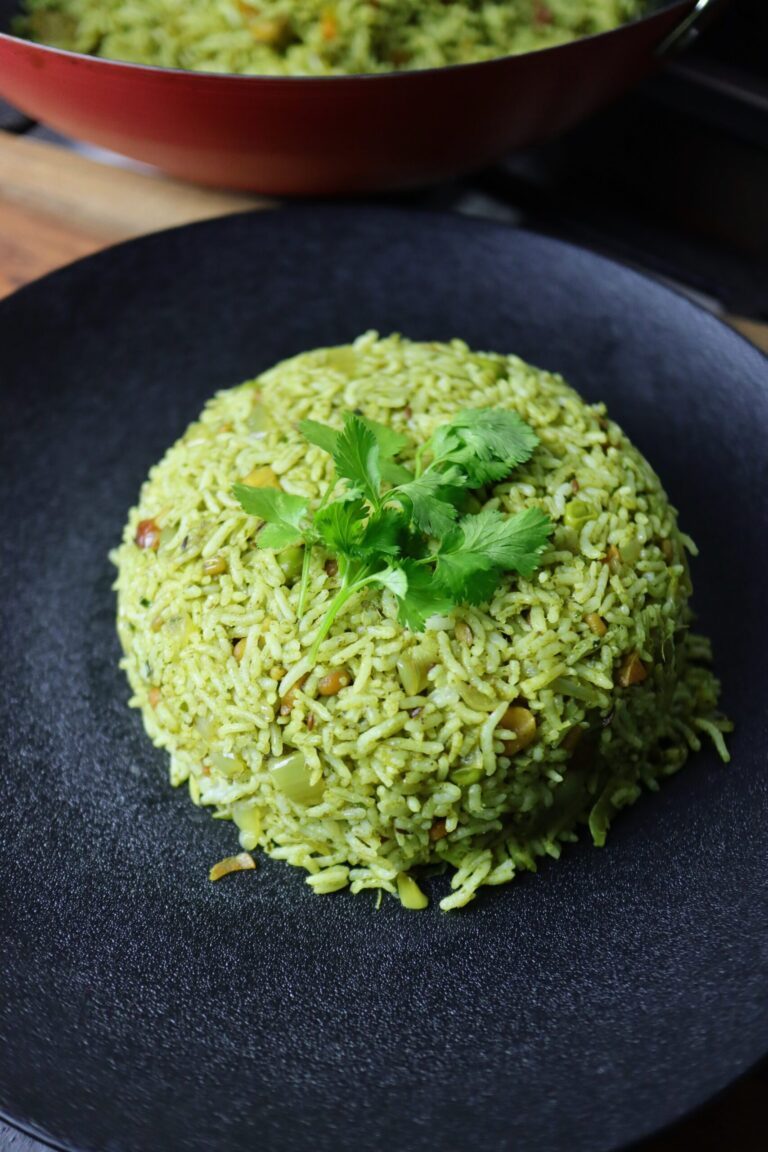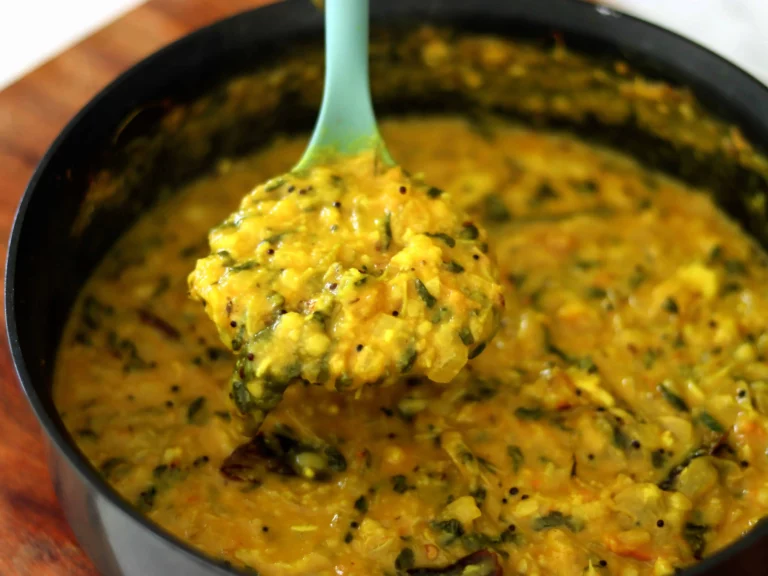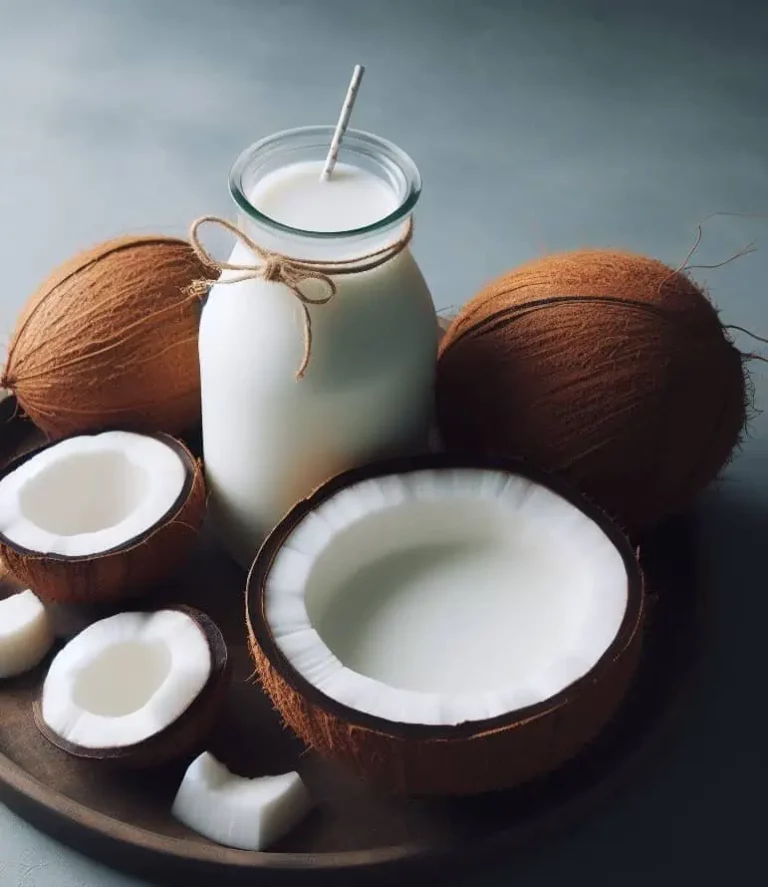Onions vs Shallots vs Pearl Onions
Onions are like extended family that show up in almost every dish we prepare. But what about their lesser known cousins like shallots and petite pearl onions? These unsung alliums actually have their own distinct personalities. Knowing the difference between onions and shallots or how pearl onions differ from regular onions allows us to use the best one for optimal flavour.
While onions, shallots and pearl onions hail from the same allium family and vaguely resemble each other, their differences in aroma, taste and texture set them apart. Shallots have a more delicate, sweet flavour than regular pungent onions. Pearl onions lend a fabulous crunch that softened larger onions can’t achieve. You can’t easily substitute shallots for onions cup-for-cup or use pearl onions to replace onions by weight.
Understanding features like the mellow shallot flavour or best way to use pearl onions lets us incorporate them appropriately based on the dish instead of defaulting to yellow onions every time. Learn tips like how to peel shallots easily, what onion substitute works for pickling or can you use pearl onions for caramelized onion recipes?
This guide will uncover everything from nutritional differences between onions and shallots to how they should be stored. Let’s appreciate shallots, pearl onions and good old onions each for their individual strengths!
Onions
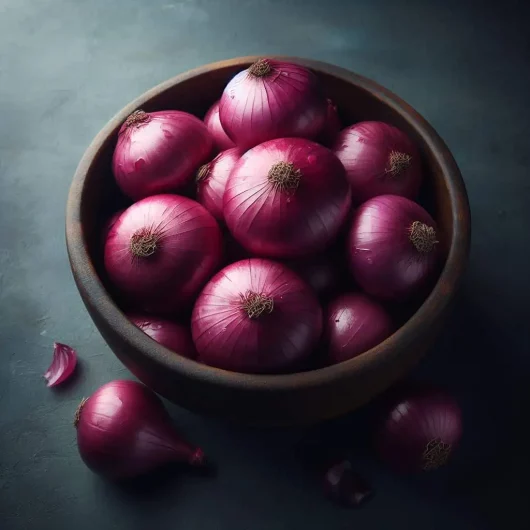
These are the largest in size of the three and come in white, yellow and red varieties. When raw, onions have an extremely pungent, eye-watering sulfuric taste and aroma with a thick, papery outer skin and crisp, juicy flesh inside arranged in concentric rings. Their assertive flavour comes from the high amounts of sulfur compounds they contain. These compounds provide onions with their signature bite and ability to make you cry! 😭
When cooked, onions turn sweeter, developing a caramelized taste as their natural sugars are concentrated through the cooking process. They tend to be overpowering and can mask other more delicate ingredients which is why onion is most often used as a foundational aromatic base for many cooked dishes like sauces, soups, stews and curries rather than served raw. Their texture softens from firm and crunchy when fresh to mushy and translucent once cooked.
Pearl Onions
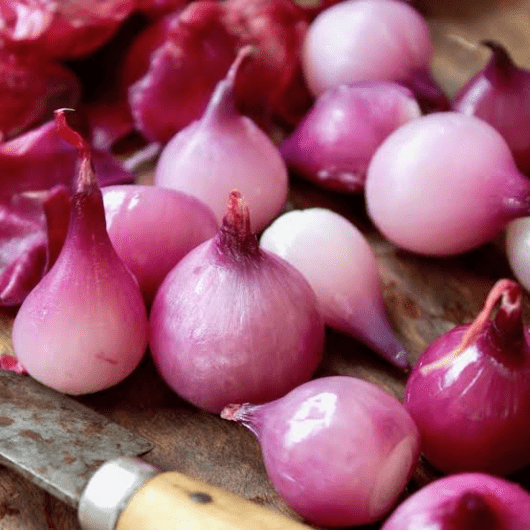
As their name suggests, pearl onions are small, rounded onions about the size of marbles, rather than bulbs. They can be white or red and have thin, delicate skin and barely any top stem. Compared to regular large onions, pearl onions are much subtler and sweeter in taste – rather than being aggressively pungent, they have a faint onion flavour coupled with mild sweetness.
Pearl onions also retain a pleasing crunchiness when cooked, unlike regular onions that tend to disintegrate and turn slimy during cooking. This textural contrast makes them ideal for pickles, stews, kebabs, shishs and roasts. They are perfectly edible raw as well with their gentle taste, often enjoyed in salads or appetizers. Being petite, pearl onions require almost no prep other than a quick blanch and peel saving kitchen time!
Shallots
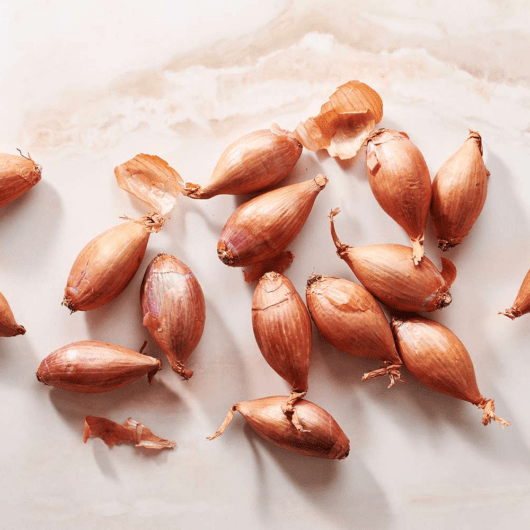
Shallots resemble heads of garlic with their clustered segments but unlike garlic, each shallot bulb has an onion-like structure with rings when sliced rather than individual cloves. Shallots taste like a cross between mild onions and garlic – they have subtle oniony notes without being overbearingly strong like regular onions.
When raw, shallots add refined hints of sweetness and brightness. Cooked, shallots turn rich, sweet and buttery soft with a smooth, velvety texture. They lack the sharp bite of onion and do not overpower other ingredients. This makes them shine in sauces, vinaigrettes and anything that needs elegant, understated flavour rather than punchy potency. A little shallot can impart just enough flavour while having universal appeal.
So in summary, as you move from onions to pearl onions to shallots, the flavour profile goes from aggressive, eye-watering pungency towards delicate, restrained sweetness.
FAQ
Can I use onions instead of shallots in a specific recipe?
Whether you can substitute onions for shallots in your specific recipe depends on several factors:
Flavour profile:
- Shallots: Have a milder and sweeter flavour with hints of garlic and sometimes a slight nuttiness.
- Onions: Have a sharper, more pungent flavour, and can vary in intensity depending on the type (yellow, white, red, etc.).
Impact on the dish:
- Subtle dishes: Replacing shallots with onions might overpower the other flavours.
- Strong-flavoured dishes: Onions might blend in better and not significantly alter the overall taste.
Recipe considerations:
- Cooking method: Shallots typically caramelize faster and sweeter than onions due to their higher sugar content.
Here are some general guidelines:
- For raw applications like salads or dressings, red onions might overpower the dish. Consider using green/white onions or chives instead.
- For dishes where shallots are caramelized, use yellow onions for a similar sweetness, but adjust the cooking time to prevent burning.
- For stir-fries or sauces where shallots are sautéed, white or red onions can be good alternatives, but adjust the quantity as needed.
Are pearl onions just small versions of regular onions?
No, pearl onions are not simply small versions of regular onions, although they share some similarities. Here’s a breakdown of the key differences:
- Size: Pearl onions are much smaller, typically ranging from 1/4 inch to 1/2 inch in diameter, while regular onions can be much larger, reaching up to 4 inches or more.
- Shape: Pearl onions tend to be more round and uniform in shape, while regular onions can be round, oval, or even flat.
- Flavour: Pearl onions are milder and sweeter than regular onions, with a delicate flavour that can be described as slightly oniony, garlic-like, and even slightly nutty. Regular onions have a more pungent and sharp flavour, often described as spicy or grassy.
- Aroma: Pearl onions have a milder and more subtle aroma than regular onions.
How can I tell if something is a shallot or a small onion?
Shallots often grow in clusters, with multiple cloves attached to a single base. Small onions are usually single cloves.
Shallots tend to be elongated and somewhat pear-shaped, with a bulbous bottom and a tapered neck. Small onions can be round, oval, or flat, similar to larger onions.
Shallots have papery, dry skin that is often brown, copper, or purple. Small onions can have a similar skin color, but may also be yellow or white.
Shallots have a more pungent and garlicky aroma than most small onions. Small onions can have a milder aroma, similar to regular onions.
What are shallots best used for?
Here are the best uses for shallots in cooking:
- Sauces and Gravies – The mellow sweetness of shallots is perfect for making rich, aromatic sauces and gravies. Their smooth texture blends into the liquid beautifully without leaving awkward chunks.
- Vinaigrettes and Dressings – Shallots lend a subtle flavour to vinaigrettes without overpowering the other ingredients. Mix some minced shallots into oil, vinegar and herbs for topping salads.
- Compound Butters – Blend some finely diced shallots into butter along with herbs and spices to make flavourful compound butters for meats, seafood, vegetables etc.
- Soups and Broths – Add chopped or whole stewed shallots to elevate the taste of soups and broths. Their sweetness balances out bitter notes.
- Roasted Vegetables – Toss wedge cuts of shallot with olive oil and vegetables like Brussels sprouts, carrots etc before roasting for caramelized flavours.
- Creamy Pastas – Saute some thinly sliced shallots before adding to pasta combined with creamy or cheese sauces for a flavour boost.
In short, shallots provide a punch of rich, rounded sweet oniony flavour to dressings, dips and delicate sauces without harsh sharpness. Their velvety texture when cooked also makes them perfect for blending into anything smooth and creamy!
What are some of the best uses for regular onions and pearl onions in Indian cooking?
Regular Onions:
- Base for Curries – Sautéed onions are the foundation for most Indian curries across styles – wet or dry. They balance spices and provide sweet depth. Their sweet depth balances heat and pungency in chicken tikka masala, palak paneer etc
- Gravies – Smooth, creamy onion based gravies made pureed with cashews, poppy seeds etc flavour meats like keema, fish and eggs in iconic dishes like rogan josh, kodi iguru.
- Braises – Slow cooked meat stews and braises rely on melted down onions for body, texture and recording spices’ essence to flavour cuts in beef etc.
- Bombay Potatoes – Thinly sliced caramelized onions mixed with potatoes are the namesake of this ubiquitous Indian side dish.
- Onion Bhaji – Thinly sliced onions dipped in spiced chickpea flour batter and deep fried make a popular Indian snack.
- Onion Chutneys – Grated onion mashed with various ingredients like coconut and green chilies make flavour packed chutneys.
- Onion Raita – A cooling yogurt-based side, onion raita combines whisked curd, diced onions and spices.
- Rice Biryanis – Layer the rice dish studded with caramelized onions for an aromatic, flavour-packed, one-pot meal.
Pearl Onions:
- Soups – Pearl onions lend a gentle sweetness and aroma when slow-simmered along with broths and other soup ingredients like root vegetables. Beef stew, vegetable soup, and chicken noodle soups can all gain character from pearl onions.
- Hearty roasts – Roast meats like rack of lamb or pork chops pair wonderfully with the caramelized sweetness of roasted pearl onions scattered around the pan. It adds sophisticated depth to meat juices.
- Pasta bakes – creamy pasta dishes with cheese like cheesy baked ziti or mac n cheese taste elevated with pearl onions interspersed throughout and browned on top adding flavour contrast.
- Meat/Vegetable Curries – Whole pearl onions added to curries provide texture, visual appeal and burst of sweetness when bitten into.
- Shish Kebabs – Thread marinated meats and vegetables with pearl onions onto skewers before grilling for sweet bursts of flavour in every bite with a crisp-tender texture.
- Stuffed Vegetables – When making stuffed capsicum, tomatoes or cabbage rolls, pearl onions lend fabulous taste, visual appeal and textural crunch when cooked inside stuffing mixes.
- Rice pilafs – Stud tomatoey biryani or vegetable pulao rice dishes with pearl onions or stir fried pearl onion crisps on top for an extra layer of sweetness and bite.
- Salads – Raw pearl onions lend fabulous crisp fresh bite with subtle sharpness to grain salads and potato salads taking them up a notch in taste.
- Sidedish Dry Fry – Pearl onion crisp fry with mild spices makes simple flavourful accompaniment to meals.
How do I store shallots and pearl onions properly?
Storing shallots and pearl onions properly is key to preserving their freshness and flavour. Here are some tips:
General tips:
- Choose firm, dry shallots and pearl onions. Avoid any that are soft, bruised, or moldy.
- Don’t wash them before storing. Washing can promote spoilage. Just wipe them clean with a dry paper towel before using.
- Keep them cool and dark. A pantry or a cool, well-ventilated cupboard are ideal locations. Avoid storing them near heat sources or sunlight.
- Don’t store them in plastic bags. Plastic traps moisture, leading to faster spoilage. Use breathable containers instead, like mesh bags, open baskets, or paper bags.
For shallots:
- Leave them whole if they are clustered. Breaking them apart can lead to faster drying.
- Store them in a single layer. This allows for proper air circulation and prevents them from touching, which can cause mold or rot.
- They will last for up to 2 months under ideal conditions.
For pearl onions:
- Store them loose or in a mesh bag. Don’t crowd them in a container.
- They will last for up to 3 weeks under ideal conditions.
Additional tips:
- Don’t store shallots and pearl onions near other produce. They can absorb each other’s odors and flavours.
- If you notice any signs of spoilage, discard the affected shallots or pearl onions immediately.
- You can store peeled shallots in an airtight container in the refrigerator for up to 5 days.
Can people with onion allergies eat shallots?
Whether people with onion allergies can safely eat shallots depends on the severity and specific nature of their allergy. Here’s the breakdown:
Cross-reactivity: Shallots and onions belong to the same plant family (Allium), and cross-reactivity is common, meaning someone allergic to onions may also react to shallots. This is because both contain similar proteins that trigger the allergic response.
Severity: People with mild onion allergies may tolerate shallots better than regular onions due to their milder flavour and potentially lower levels of the allergenic proteins. However, even trace amounts of shallots can trigger a reaction in people with severe allergies.
Individual sensitivity: Each person’s allergy is unique, and some individuals with onion allergies may react differently to shallots. Tolerance can also vary depending on the form of consumption (raw, cooked, etc.).
Recommendations:
- Consult a doctor or allergist: If you have a known onion allergy, it’s best to consult a healthcare professional before trying shallots. They can perform specific allergy tests to assess your individual risk and provide personalized guidance.
- Start with a small amount: If a doctor gives the green light, try a tiny amount of shallot under close supervision to monitor for any reaction.
- Be cautious: Pay close attention to your body after consuming shallots. Any symptoms like itching, swelling, difficulty breathing, or digestive upset indicate an allergic reaction and necessitate immediate medical attention.
Remember, safety comes first. If you have any concerns, it’s always better to err on the side of caution and avoid shallots altogether. You can explore other delicious ingredients with similar flavours, like garlic or chives, that may be better suited for your dietary needs.


